Related Research Articles

Australian art is any art made in or about Australia, or by Australians overseas, from prehistoric times to the present. This includes Aboriginal, Colonial, Landscape, Atelier, early-twentieth-century painters, print makers, photographers, and sculptors influenced by European modernism, Contemporary art. The visual arts have a long history in Australia, with evidence of Aboriginal art dating back at least 30,000 years. Australia has produced many notable artists of both Western and Indigenous Australian schools, including the late-19th-century Heidelberg School plein air painters, the Antipodeans, the Central Australian Hermannsburg School watercolourists, the Western Desert Art Movement and coeval examples of well-known High modernism and Postmodern art.
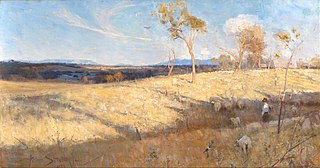
The Heidelberg School was an Australian art movement of the late 19th century. It has latterly been described as Australian impressionism.
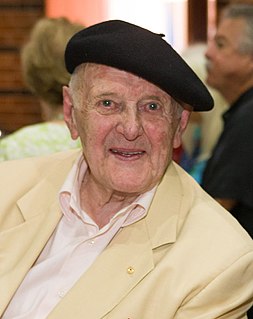
John Henry Olsen AO OBE is an Australian artist and winner of the 2005 Archibald Prize. Olsen's primary subject of work is landscape.
Godwin Bradbeer is a New Zealand-born artist now living and working in Melbourne, Australia. Bradbeer is known for large-scale figurative drawing and has been exhibited internationally since the 1970s. He has taught at the University of Melbourne, the Victorian College of the Arts, Monash University, and other art schools in Australia and Asia. From 2005 to 2010, he was head of drawing of the School of Art at RMIT University in Melbourne.

Percival (Percy) Charles Lindsay was an Australian landscape painter, illustrator and cartoonist, born in Creswick, Victoria. Percy was the first child born to Jane Lindsay and Dr Robert Charles Lindsay. His siblings included the well-known artists: Sir Lionel Lindsay, Norman Lindsay, Ruby Lindsay and Sir Daryl Lindsay.
Robert Jacks was an Australian painter, sculptor and printmaker.
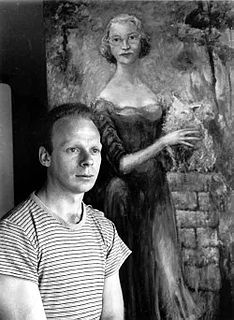
Peter Benjamin Graham, was an Australian visual artist, printer, and art theorist.
Tate Adams was an Australian artist, based in Townsville, who was named a Member of the Order of Australia in 2009 for service to publishing and to the arts, particularly through contributions to the development of printmaking in Australia. In 2010 he was made the Inaugural Honorary Fellow of the Print Council of Australia.

Stewart Angus MacFarlane, is a figurative Australian painter. His style is a pared-down realism combined with a surreality of lighting and perspective. He often, though not always, places a female or male nude in a situation of erotic enigma. He paints the Australian scene representative of Western society as a whole.
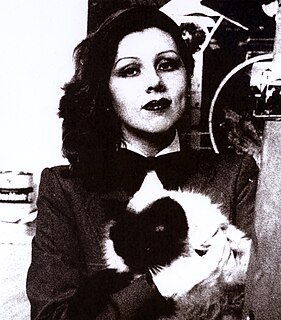
Nora Sumberg is an Australian landscape painter whose work has over time become increasingly lyrical, abstract and atmospheric. Her art is characterized by intense, floating swathes of colour, impressionistic and ambiguous terrain and glowing, multi-directional light sources. Examples of Sumberg's art are held in The National Gallery of Victoria, The Queensland Art Gallery, The Heide Museum of Modern Art and the Smorgan Collection. Sumberg is also the granddaughter of Voldemar Sumberg, the Minister for Social Affairs under the Otto Tief Government in Estonia. Estonian culture is important to Sumberg and she has an artist residency in Tallinn in 2011.
Robert Rooney (1937–2017) was an artist and art critic from Melbourne, Australia, and a leading figure in Australian Conceptual art.
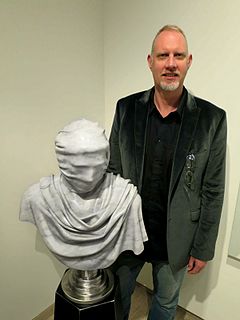
Robert Hague, is an Australian artist living and working in Melbourne, Victoria. He is best known for his metal and marble sculpture and his detailed lithographic print work.

Constance Stokes was an Australian modernist painter who worked in Victoria. She trained at the National Gallery of Victoria Art School until 1929, winning a scholarship to continue her study at London's Royal Academy of Arts. Although Stokes painted few works in the 1930s, her paintings and drawings were exhibited from the 1940s onwards. She was one of only two women, and two Victorians, included in a major exhibition of twelve Australian artists that travelled to Canada, the United Kingdom and Italy in the early 1950s.
Andrew John Sibley was an English-born Australian artist. Sibley has been the subject of three books and is commonly listed in histories and encyclopedias of Australian art as a significant figurative painter of the mid and late 20th century.

Chris Mason is an Australian artist. Mason resides in Melbourne. His work is held in several public collections, including those of the National Gallery of Australia and the State Library of Victoria.

Lindsay M. Edward (1919–2007) was an Australian abstract artist, mosaicist and teacher. He was born in Victoria on 26 August 1919.
Realities Gallery was a Melbourne gallery which showed work of Australian art of the western and indigenous traditions, and Pacific and international art. It operated from 1971 to 1992.
Stephen Wickham is an Australian photographer, painter and printmaker.
Hertha Kluge-Pott is a German-born Australian printmaker based in Melbourne.

Barbara Nancy Brash was a twentieth-century post-war Australian artist known for her painting and innovative printmaking. In an extensive career she contributed to the Melbourne Modernist art scene, beside other significant women artists including: Mary Macqueen, Dorothy Braund, Anne Marie Graham, Constance Stokes, Anne Montgomery (artist) and Nancy Grant.
References
- Beaumont, Mary Rose. Arts Review (London), 29 January 1988
- Exhibitions (1968), The Canberra Times, Thursday 28 October, Trove digitised newspapers, accessed 17 July 2014
- Field, C., 'Introduction' in Jeffrey Makin: Genii Loci, exhibition catalogue published by Stonnington Stables Museum of Art, Deakin University, 2002
- Feild, C., Jeffery Makin: Drawings, exhibition catalogue published by Stonnington Stables Museum of Art, Deakin University, 2006
- James Makin Gallery website, Artists: Jeff Makin (biography), <http://www.jamesmakingallery.com/showartist.php?ex=co1062pjpa19026370741#sthash.sSHmceGG.9MZTV7bH.dpbs>, accessed 17 July 2014
- Lynn, Elwyn. Conjuring With Four Masters in Full Flight, The Australian Magazine, no. 14, 14–15 May 1988
- Makin, J, Critical Moments: Essays and Reviews on Art in Australia (2011), MacMillan Art Publishing, Melbourne
- McCulloch, A (ed. S. McCulloch) The Australian Encyclopedia of Australian Art (2006), Allen and Unwin, St Leonards NSW
- McGregor, K. and A. Crawford, William Creek and Beyond (2002), Craftsman House Fine Art Publishing
- Thomas, David. ‘An Antipododean in Search of the Sublime’, in Jeffrey Makin: Genii Loci, exhibition catalogue essay published by Stonnington Stables Museum of Art, Deakin University, 2002, pp. 7–14
- Who’s Who in Australia, Crown Content, Melbourne, 1998–2005
- Prof. Jenny Zimmer AO (ed.), Australia Felix: Landscapes by Jeffrey Makin (2002), MacMillan Art Publishing, Melbourne